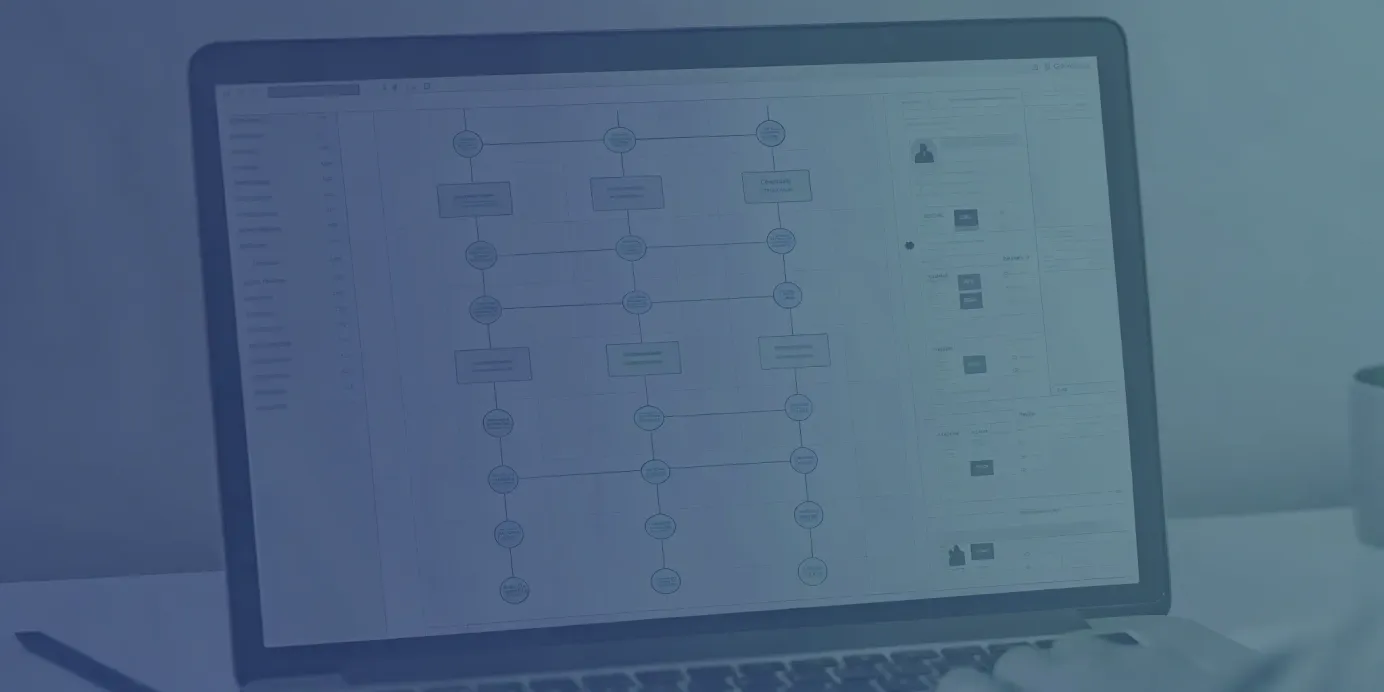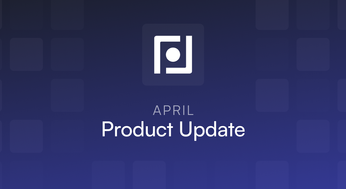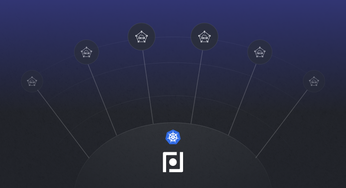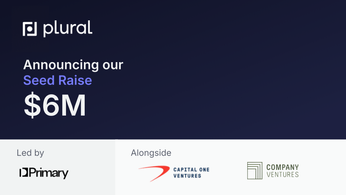
Kubernetes Cluster Security: A Comprehensive Guide
Understand the essential components of a Kubernetes cluster and learn how to enhance Kubernetes cluster security for efficient and secure deployments.
Table of Contents
Kubernetes powers modern apps, but its complexity can feel like a security puzzle. This guide unpacks the core components of a Kubernetes cluster, explaining how they work together and, more importantly, how to secure them. We'll cover building secure container images and implementing robust runtime security. Whether you're a Kubernetes newbie or a seasoned pro, you'll find actionable insights to strengthen your Kubernetes cluster security.
Whether you're a seasoned Kubernetes administrator or just starting out, a deep dive into these core components is essential for building and managing robust, scalable, and resilient containerized deployments. We'll explore the control plane, the worker nodes, and the key resources that make up the Kubernetes ecosystem, equipping you with the knowledge to troubleshoot, optimize, and secure your deployments effectively.
Unified Cloud Orchestration for Kubernetes
Manage Kubernetes at scale through a single, enterprise-ready platform.
Key Takeaways
- Understanding the interplay between the control plane and worker nodes is crucial: The control plane manages the cluster's overall state, schedules workloads, and ensures the desired state is maintained. Worker nodes execute the workloads, running your containerized applications.
- Resource limits and network policies are essential for efficient and secure operations: Define resource requests and limits to prevent resource starvation and ensure predictable resource allocation. Implement Network Policies to control traffic flow between pods and enhance security.
- Tools like Lens, Plural, Prometheus, and Grafana streamline Kubernetes management: These tools provide visualization, monitoring, cluster provisioning, and application deployment capabilities, simplifying complex tasks and improving observability.
Understanding Kubernetes Cluster Security
Kubernetes security is a multifaceted challenge, requiring a comprehensive approach to protect your applications and data. It's not just about setting up firewalls; it's about securing each layer of your cluster, from the API server to individual pods. Let's break down the key areas you need to focus on:
API Access Control
The Kubernetes API server is the central control point for your cluster. Securing it is paramount. This starts with encrypting all communication with Transport Layer Security (TLS). But encryption isn't enough. You also need strong authentication mechanisms. Consider using certificates, or integrating with existing identity providers using OpenID Connect (OIDC) or LDAP. Finally, Role-Based Access Control (RBAC) is crucial for granular control over permissions within your cluster. RBAC lets you define precisely who can access what resources and perform which operations.
Kubelet Security
Each node in your cluster runs a Kubelet, an agent responsible for managing the containers on that node. These Kubelets need their own layer of security. Ensure authentication and authorization are enabled for the Kubelet. This prevents unauthorized access and protects the integrity of your worker nodes and the workloads they manage. This adds defense in depth to your security posture.
Network Policies
Controlling the flow of traffic between your pods is essential, not just for security, but also for resource management. Network Policies act like internal firewalls, allowing you to specify which pods can communicate with each other and with external services. By default, all pods can communicate freely. Network Policies give you fine-grained control to restrict this communication, minimizing your attack surface and improving performance.
Protecting Cluster Components
etcd, the key-value store used by Kubernetes to store cluster state, is a critical component. Protecting it with strong credentials and potentially isolating it from other components is vital. Additionally, enabling audit logging provides a valuable audit trail of API activity. This helps in troubleshooting, identifying potential security breaches, and meeting compliance requirements.
Pod Security Standards
Pod Security Standards provide a framework for enforcing security best practices at the pod level. These standards define profiles that restrict what containers are allowed to do, such as preventing them from running as root or loading unwanted kernel modules. Using these standards helps ensure a consistent level of security across your deployments and simplifies compliance.
Continuous Monitoring
Security isn't a one-time setup; it's an ongoing process. Regularly monitoring your cluster's security posture is crucial. Utilize audit logs to gain insights into API requests, identify anomalies, and troubleshoot security issues. Consider integrating security scanning tools to identify vulnerabilities in your container images and configurations. Platforms like Plural can simplify Kubernetes management, including security monitoring and automation, by providing centralized dashboards and automated security checks.
What are Kubernetes Components?
Kubernetes (often shortened to K8s) orchestrates containerized applications across a cluster of machines. This orchestration relies on a modular architecture of interconnected components, primarily categorized as the control plane and worker nodes. Understanding these building blocks is fundamental for managing and troubleshooting your Kubernetes deployments.
Core Components of a Kubernetes Cluster
A Kubernetes cluster has two main parts: the control plane and worker nodes. The control plane manages the cluster's overall state while the worker nodes run your applications.
Control Plane Components
The control plane is the brains of the operation, responsible for managing the cluster and its workloads. It's the central point for all cluster operations. Key components include:
- kube-apiserver: All requests to manage or interact with the cluster go through the API server. It authenticates users, validates requests, and updates the cluster's state in etcd.
- etcd: This distributed key-value store holds the cluster's data. The API server uses etcd to store and retrieve information about the cluster's state, including deployments, services, and other resources.
- kube-scheduler: When you deploy an application, the scheduler figures out which worker node is the best fit to run it. It considers factors like available resources, node constraints, and data locality.
- kube-controller-manager: This component continuously checks that the desired state of the cluster matches the actual state. It runs control loops that monitor the cluster and take corrective action when needed.
- cloud-controller-manager (optional): When running Kubernetes in the cloud, this component interacts with your cloud provider's APIs. It manages cloud-specific resources like load balancers and storage volumes, integrating your cluster with the cloud platform.
Worker Node Components
Worker nodes are where your applications actually run. They're managed by the control plane and execute the tasks assigned by the scheduler. Key components include:
- kubelet: This agent runs on each worker node, communicating with the control plane. It receives instructions from the API server and manages the lifecycle of pods and containers on that node.
- Container Runtime: This software runs the containers on each worker node. Docker, containerd, and CRI-O are common examples. The container runtime interacts with the operating system kernel to create and manage containers.
- kube-proxy: This network proxy, running on each worker node, manages network rules. It ensures that network traffic can reach the correct pods and services within the cluster. kube-proxy is essential for service discovery and load balancing.
Kubernetes Security Best Practices by Lifecycle Phase
Securing your Kubernetes deployments is an ongoing process that requires attention throughout the application lifecycle. Let's break down security best practices by phase—build, deploy, and runtime.
Build Phase Security
The build phase focuses on creating secure container images and minimizing vulnerabilities before deployment.
Image Scanning
Before deploying any container image, scan it for known vulnerabilities using tools like Clair or Anchore Engine. This helps identify and address security flaws early in the development process, preventing them from reaching production. Think of it like a health check for your software, ensuring it's free of known infections.
Host OS Hardening
Secure the underlying host operating system by applying security updates, minimizing installed packages, and configuring appropriate firewall rules. A hardened host OS provides a more secure foundation for your Kubernetes cluster, reducing the potential attack surface. This prevents attackers from taking over your entire system if a container is compromised.
Minimizing Attack Surface
Use minimal base images for your containers, reducing the number of installed packages and libraries. A smaller attack surface limits the potential impact of vulnerabilities. Choose images specifically designed for containerized environments, like Alpine Linux, known for its small size and security focus.
Deploy Phase Security
The deploy phase involves securing the Kubernetes cluster itself and configuring secure deployments.
Harden Kubernetes Clusters
Use tools like kube-bench to assess the security posture of your Kubernetes clusters and identify misconfigurations. Implement strong access controls, including Role-Based Access Control (RBAC), to restrict access to cluster resources. Regularly review and update your Kubernetes configurations to align with security best practices. Consider a platform like Plural to streamline and automate these configurations across your fleet.
Integrate Security Tools
Integrate your Kubernetes deployments with existing security tools like intrusion detection systems (IDS) and security information and event management (SIEM) systems. This provides centralized visibility into security events and enables faster incident response. Connecting your Kubernetes system to your existing security tools allows them to work together seamlessly.
Secure Container Images
Building images on secure base images, regularly scanning for vulnerabilities, and using a CI/CD pipeline to automate these security checks are crucial. This ensures that only trusted and verified images are deployed to your cluster. Tools like Docker Hub offer vulnerability scanning features to integrate into your CI/CD workflows.
Image Policy Webhook
Implement an image policy webhook to enforce restrictions on which images can be deployed. This prevents the deployment of unverified or insecure images, adding an extra layer of security to your cluster. For example, you can configure the webhook to only allow images from specific registries or with specific security labels.
Continuous Vulnerability Scanning
Regularly scan both first-party and third-party containers for vulnerabilities. This ongoing process helps identify and address new security flaws as they emerge. Solutions like Trivy can be integrated into your CI/CD pipeline for automated vulnerability scanning.
Security Contexts
Use Security Contexts to define the security settings for pods and containers, controlling access to resources and limiting their capabilities. This helps prevent privilege escalation and limits the impact of compromised containers. Define resource limits to prevent one container from consuming excessive resources and impacting others.
Pod Security Standards
Adopt Pod Security Standards to enforce a baseline level of security for your pods. These standards provide predefined security profiles that you can apply to your deployments, simplifying security configuration and ensuring a consistent security posture.
Service Mesh (Optional)
Consider implementing a service mesh like Istio or Linkerd to enhance security for inter-service communication. A service mesh provides features like mutual TLS authentication and traffic encryption, improving the security of your microservices architecture. This adds a layer of security without requiring code changes to your applications.
Centralized Policy Management
Use a centralized platform like Plural to manage security policies across your Kubernetes clusters. This simplifies policy enforcement and ensures consistency across your deployments, reducing the risk of misconfigurations and security gaps.
Resource Quotas
Implement resource quotas to prevent resource starvation and ensure fair resource allocation among different applications. This helps maintain the stability and performance of your cluster, preventing denial-of-service caused by excessive resource consumption.
Secrets Management
Store secrets securely using a dedicated secrets management solution like HashiCorp Vault or External Secrets Operator. Avoid storing secrets in environment variables or configmaps. Encrypt secrets at rest and consider using an external secrets manager for enhanced security and centralized management.
Namespaces
Use namespaces to logically separate different applications and teams within your cluster. This provides isolation and helps prevent unauthorized access to resources, improving the overall security posture of your deployments.
Runtime Phase Security
The runtime phase focuses on monitoring, detecting, and responding to security threats in real time.
Monitor Container Activity
Monitor process activity, network communication, and other relevant events within your containers. This helps detect suspicious behavior and potential security breaches. Use tools like Sysdig to gain deep visibility into container activity.
Container Runtime Security
Use tools like Falco to detect runtime threats and anomalies. Falco monitors system calls and container activity, alerting you to potentially malicious behavior. Integrate Falco with your monitoring and alerting systems for real-time threat detection.
Container Sandboxing (Advanced)
For enhanced security, consider using container sandboxing technologies like gVisor to isolate containers from the underlying host operating system. This provides an additional layer of defense against container breakout attacks, limiting the impact of a compromised container.
Prevent Unwanted Kernel Modules
Configure your container runtime to prevent the loading of unwanted kernel modules. This helps mitigate the risk of kernel exploits, reducing the potential attack surface of your containers.
Compare Runtime Activity
Establish baselines for normal container runtime activity and use anomaly detection tools to identify deviations from these baselines. This can help detect subtle indicators of compromise that might be missed by traditional security tools. Machine learning algorithms can be particularly effective for anomaly detection.
Monitor Network Traffic
Monitor network traffic within your cluster using tools like Cilium or Calico. This helps identify unusual network activity and potential attacks. Network policies provide granular control over traffic flow between pods, enhancing network security.
Incident Response
Develop an incident response plan for security incidents in your Kubernetes clusters. This plan should include procedures for isolating affected containers, investigating the root cause of the incident, and restoring normal operations. Be prepared to scale down or terminate suspicious pods as part of your incident response. Regularly test and update your incident response plan to ensure its effectiveness.
Credential Rotation
Regularly rotate credentials, including API keys, service account tokens, and certificates. This limits the impact of compromised credentials, reducing the window of opportunity for attackers. Automate credential rotation to minimize manual effort and ensure regular updates.
Pod Security Admission
Use the Pod Security Admission controller to enforce security policies at the pod level. This prevents the deployment of pods that violate your security standards, ensuring a consistent security posture across your deployments.
Logging
Implement robust logging and auditing to track events and activities within your cluster. This provides valuable data for security analysis and incident investigation. Centralize logs for easier access and analysis. Use tools like Elasticsearch, Fluentd, and Kibana (EFK) to collect, process, and visualize log data.
Inside the Kubernetes Control Plane
The control plane is the brain of your Kubernetes cluster. It is responsible for making decisions, such as scheduling workloads and reacting to cluster events. Let's examine its core components.
Kube-apiserver: The Cluster's Communication Hub
The kube-apiserver is the central control point for your Kubernetes cluster. It exposes the Kubernetes API, the primary way you, your tools, and other cluster components interact with Kubernetes. The API server validates and processes requests, ensuring they comply with cluster policies and resource constraints. It's also responsible for storing the cluster's state in etcd.
Etcd: The Cluster's State Database
etcd is a consistent and highly-available key-value store used by Kubernetes to store all cluster data. This includes everything from pod deployments and service configurations to secrets. Because etcd holds the cluster's state, its reliability and performance are critical. Understanding how etcd works is crucial for troubleshooting and managing your cluster.
Kube-scheduler: Assigning Workloads to Nodes
The kube-scheduler decides where to run your workloads (pods) within the cluster. When you create a pod without specifying a node, the scheduler steps in. It considers factors like resource availability on each node, pod requirements, data locality, and other constraints. This automated placement ensures efficient resource utilization and helps maintain cluster stability.
Kube-controller-manager: Maintaining Cluster State
The kube-controller-manager is a collection of control loops that constantly monitor the cluster's state and make adjustments to ensure it matches the desired state. These controllers manage various aspects of the cluster, such as replicating pods, scaling deployments, and managing services. For example, if a pod fails, the controller manager detects the failure and launches a new one to maintain the desired replica count. This continuous reconciliation loop is essential for maintaining the stability and resilience of your cluster.
Inside the Kubernetes Worker Nodes: Running Your Applications
Worker nodes are the workhorses of your Kubernetes cluster. They're the machines where your applications, packaged as containers, actually run. Several key components on each worker node ensure the smooth operation of your workloads. Let's explore them.
Kubelet: The Node Agent
The kubelet acts as the primary agent on each worker node, communicating with the control plane and receiving instructions about which pods should be running. It then ensures that those pods are running and healthy. The kubelet registers the node with the cluster, monitors resource usage, and reports back to the control plane. The kubelet interacts with the container runtime to start, stop, and manage the containers within pods.
Container Runtime: Running Containers
The container runtime is the software responsible for running containers on the worker node. Kubernetes supports several container runtimes, including Docker, containerd, and CRI-O. The kubelet instructs the container runtime to pull container images from a registry (like Docker Hub or a private registry) and then run those images as containers within pods. The container runtime manages the lifecycle of the containers, from starting and stopping them to managing their resources.
Kube-proxy: Managing Network Rules
Kube-proxy runs on each worker node as a network proxy, maintaining network rules that allow communication to your pods from inside or outside the cluster. Kube-proxy manages virtual IPs for Services, which provide a stable endpoint for accessing a group of pods, even if those pods are dynamically created or destroyed. It intercepts requests to the Service's virtual IP and routes traffic to the appropriate backend pods. This allows your applications to communicate reliably, regardless of the underlying pod churn.
How Kubernetes Components Interact
Kubernetes components constantly communicate and collaborate to maintain the desired state of your cluster. Understanding this interaction is crucial for effectively managing and troubleshooting your deployments.
API Server: The Communication Hub
The Kubernetes API server is the entry point for any request or instruction, whether deploying a new application, scaling existing resources, or querying the cluster's status. This centralized communication model simplifies management and ensures consistency. External users, internal components like the scheduler and controller-manager, and even the nodes themselves interact with the cluster through the API server. This design reinforces security by providing a single point of authorization and authentication.
State Management and Synchronization
Kubernetes operates on a declarative model. You define the desired state of your applications and resources in configuration files, and Kubernetes continuously works to match the actual state. This continuous reconciliation loop is core to Kubernetes' automation. The control plane, specifically the controller-manager and scheduler, constantly monitors the cluster's state, comparing it to the desired state defined in your configurations.
If there's a discrepancy, like a pod failing or a deployment needing scaling, the control plane takes corrective action. This constant monitoring and adjustment keeps your applications running smoothly and resilient. The desired state is stored in etcd, ensuring persistence and availability even if individual components fail.
Key Kubernetes Objects and Resources
Working with Kubernetes involves interacting with its fundamental objects and resources. Understanding these building blocks is crucial for effectively deploying and managing your applications. Let's break down some of the key objects you'll encounter.
Pods: The Smallest Deployable Units
Pods are the smallest deployable units in Kubernetes. A pod encapsulates one or more containers representing your application's components. Think of a pod as a single logical unit—if one container in a pod fails, Kubernetes restarts the entire pod. This ensures your application components run together. Pods also share a network namespace, allowing containers within the same pod to communicate easily via localhost.
Services: Abstracting Pod Access
Services provide a stable entry point for accessing a group of pods. Since pods can be ephemeral (restarted, rescheduled), their IP addresses can change. Services abstract this away by offering a consistent IP address and DNS name, regardless of the underlying pod changes. They act as load balancers, distributing traffic across healthy pods and enabling service discovery, allowing your applications to locate and communicate with each other.
Volumes: Persistent Data Storage
By their nature, containers are ephemeral. When a container terminates, its data is lost unless measures are taken to persist it. Kubernetes addresses this with Volumes. Volumes provide persistent storage that outlives the lifecycle of individual pods. This ensures data integrity and availability, even when pods are restarted or rescheduled.
Namespaces: Organizing and Isolating Resources
Managing numerous resources can become complex in larger Kubernetes deployments. Namespaces divide cluster resources, creating isolated environments for different teams or projects. This logical separation enhances organization, simplifies management, and allows teams to operate independently without resource conflicts.
Extending Kubernetes with Add-ons
Kubernetes is a powerful container orchestrator, but its true potential is unlocked when extended with add-ons. These additions enhance functionality and simplify management, addressing common operational needs. Let's explore some essential add-ons that bolster your Kubernetes deployments.
DNS for Service Discovery
Within a Kubernetes cluster, services need to locate and communicate with each other seamlessly. DNS (Domain Name System) provides this crucial service discovery mechanism. Instead of relying on hardcoded IP addresses, applications use DNS names to address each other. This simplifies configuration and makes the system more resilient to changes. Kubernetes includes a built-in DNS service that automatically assigns DNS records to each service, allowing easy access by name.
Ingress Controllers for External Access
While DNS handles internal service discovery, exposing your applications to the outside world requires an Ingress controller. An Ingress acts as a reverse proxy and load balancer, routing external traffic to the appropriate services within your cluster. Ingress controllers typically handle HTTP and HTTPS traffic, allowing you to define rules for routing requests based on hostnames, paths, and other criteria. They provide a single entry point for external access, simplifying network configuration and security.
Monitoring and Logging Solutions
Observability is paramount in any Kubernetes deployment. Monitoring and logging solutions provide crucial visibility into the health and performance of your applications and cluster. These tools collect metrics and logs, allowing you to identify issues, troubleshoot problems, and optimize resource utilization. Prometheus, a popular open-source monitoring system, integrates well with Kubernetes, providing a robust platform for collecting and analyzing metrics. Combined with visualization tools like Grafana, you can create dashboards and alerts to gain real-time insights into your cluster's performance.
Helm: Simplifying Application Deployment
Deploying and managing applications in Kubernetes can involve complex YAML configurations. Helm simplifies this process by acting as a package manager for Kubernetes. With Helm, you define, install, and upgrade even complex applications using charts—pre-configured packages of Kubernetes resources. Helm charts streamline deployments, making it easier to manage application dependencies and configurations. This simplifies the entire application lifecycle, from initial deployment to updates and rollbacks.
Optimize Kubernetes Performance and Security
Optimizing Kubernetes for performance and security is crucial for running reliable and efficient applications. This involves careful resource management, implementing robust network policies, and adhering to security best practices.
Resource Management: Requests, Limits, and Autoscaling
Efficient resource utilization is fundamental to Kubernetes' performance. Start by defining resource requests and limits for your pods. Requests specify the minimum resources a pod needs, ensuring predictable scheduling and resource reservation. Limits, on the other hand, prevent a single pod from consuming excessive resources and impacting other applications.
For example, setting a CPU limit prevents a pod from monopolizing CPU cycles, ensuring fair resource allocation across the cluster. The Horizontal Pod Autoscaler (HPA) automatically adjusts the number of pods based on metrics like CPU utilization or custom metrics. This dynamic scaling is essential for handling fluctuating workloads, ensuring your application meets demand while avoiding over-provisioning and unnecessary costs.
Network Policies and Pod Security
Network security within your Kubernetes cluster is paramount. Think of Network Policies as firewalls for your pods, controlling traffic flow between them. By default, all pods can communicate with each other. Network Policies allow you to specify which pods can communicate with each other and with external services, limiting the impact of security breaches by isolating compromised pods and preventing lateral movement within the cluster. For example, you could define a Network Policy that only allows traffic to your application's frontend pods from the ingress controller, blocking all other traffic.
Pod Security Admission controllers enforce restrictions on pod behavior, further enhancing security. This includes limiting access to host resources, controlling privilege escalation, and mandating the use of security contexts. For instance, you can prevent pods from running as root or accessing the host network, reducing the potential impact of a compromised container.
Best Practices for Securing Kubernetes Components
Securing your Kubernetes components is an ongoing process. Review your cluster's performance and security configurations regularly, adapting to changing workloads and evolving security threats. Stay up-to-date with Kubernetes releases and incorporate new features and best practices to maintain peak infrastructure conditions.
Consider using a managed Kubernetes service like Google Kubernetes Engine (GKE) or Amazon Elastic Kubernetes Service (EKS) to simplify cluster management and take advantage of these built-in security features. These services often provide automated updates, security patching, and managed control planes, reducing the operational burden and enhancing security.
It is also crucial to regularly audit your RBAC configurations. Ensure that only authorized users and service accounts have the necessary permissions to access and manage your cluster resources. This helps prevent unauthorized access and minimizes the potential for malicious activity.
Troubleshoot and Maintain Kubernetes Components
Operating a Kubernetes cluster has its challenges. From network issues to resource constraints, understanding how to troubleshoot and maintain your cluster is crucial for reliable application deployments.
Common Issues and Solutions
Kubernetes troubleshooting often involves addressing networking, resource allocation, and component health. Network problems can appear as connectivity failures between pods or services. Check your Kubernetes networking configurations for misconfigurations or use kubectl describe to inspect the status of your services and pods.
Resource issues, like CPU or memory starvation, can degrade application performance or cause crashes. Setting resource requests and limits for your pods can help. Finally, component failures, such as a failing kubelet or API server, demand immediate attention. Regular health checks and monitoring can help identify and address these problems proactively.
Update and Upgrade Kubernetes Components
Keeping your Kubernetes components up-to-date is essential for security and performance. Upgrading Kubernetes can be complex, requiring careful planning and execution. Before upgrading, ensure compatibility between components and test the upgrade in a non-production environment.
Upgrading Kubernetes versions or managing compatibility can be a significant hurdle. Consider platforms like Plural, which streamlines cluster upgrades with automated workflows, compatibility checks, and proactive dependency management for seamless, scalable operations. Learn more at Plural.sh or book a demo to get started today.
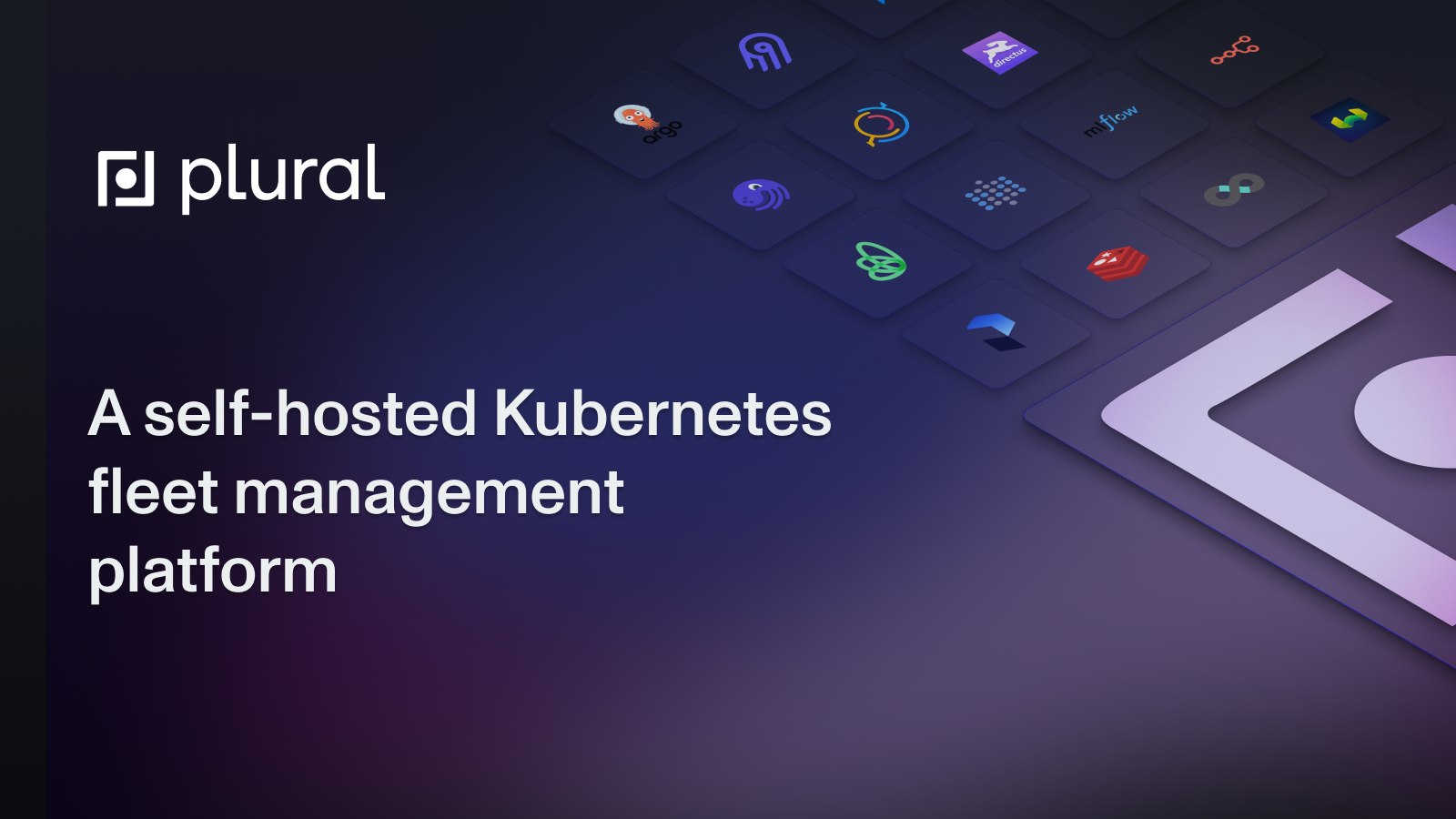
Monitor and Log for Effective Management
Comprehensive monitoring and logging are fundamental for a healthy Kubernetes cluster. Monitoring tools offer insights into resource utilization, application performance, and overall cluster health. Logging helps track events and troubleshoot issues. Tools like Prometheus and Grafana are widely used for monitoring Kubernetes, offering dashboards and alerts for key metrics. For logging, consider an EFK stack (Elasticsearch, Fluentd, and Kibana) or other centralized logging solutions.
Tools for Managing Kubernetes Components
Managing a Kubernetes cluster often involves juggling various components and configurations. A robust ecosystem of tools simplifies these tasks, improving both productivity and observability. This section explores a few key tools that can streamline your Kubernetes management workflows.
Lens: The Kubernetes IDE
Lens provides a visual and intuitive interface for interacting with your Kubernetes clusters—an IDE specifically designed for Kubernetes. You can easily visualize your cluster's resources, dig into logs, and execute commands directly from the Lens dashboard. This simplifies troubleshooting and speeds up common management tasks, making it a valuable tool for both developers and operators. Lens also supports multiple clusters, allowing you to manage all your environments from a single pane of glass.
Plural: Enterprise Kubernetes Management
Plural offers a comprehensive platform for managing Kubernetes clusters at scale. It simplifies cluster provisioning, allowing you to easily spin up new clusters across various providers like Amazon EKS, Azure AKS, and Google GKE. Beyond provisioning, Plural provides centralized management capabilities, enabling you to monitor the health and performance of your clusters, manage access control, and deploy applications consistently across your entire fleet. For organizations operating in multi-cluster environments, Plural's centralized management features reduce operational overhead by up to 95%.
Prometheus and Grafana: Monitoring and Visualization
Monitoring and observability are crucial for maintaining the health and performance of your Kubernetes clusters. Prometheus is a powerful open-source monitoring system that collects metrics from your Kubernetes components and applications. It integrates seamlessly with Kubernetes, allowing you to easily configure metric collection and alerting.
Grafana complements Prometheus by providing a rich visualization layer. You can create customizable dashboards to visualize the metrics collected by Prometheus, gaining valuable insights into your cluster's performance and resource utilization. This combination empowers you to proactively identify and address potential issues.
Related Articles
- The Essential Guide to Monitoring Kubernetes
- The Quick and Dirty Guide to Kubernetes Terminology
- Why Is Kubernetes Adoption So Hard?
- Kubernetes: Is it Worth the Investment for Your Organization?
- Understanding Deprecated Kubernetes APIs and Their Significance
Unified Cloud Orchestration for Kubernetes
Manage Kubernetes at scale through a single, enterprise-ready platform.
Frequently Asked Questions
What's the difference between the control plane and worker nodes?
The control plane is the "brain" of the cluster, making decisions about scheduling, resource allocation, and cluster state. Worker nodes are the machines where your applications (packaged as containers) actually run, executing the instructions from the control plane. They handle the actual workload processing.
How do Kubernetes components communicate with each other?
The API server acts as the central communication hub. All other components interact with the cluster through the API server, ensuring consistent and secure communication. This centralized model simplifies management and reinforces security.
What are the key Kubernetes objects I need to know?
Some fundamental objects include Pods (the smallest deployable units containing your containers), Services (providing stable access to a group of pods), Volumes (for persistent data storage), and Namespaces (for organizing and isolating resources). Understanding these objects is essential for effectively deploying and managing applications.
How can I extend Kubernetes functionality?
Add-ons enhance Kubernetes capabilities. Key add-ons include DNS for service discovery within the cluster, Ingress controllers for managing external access to your applications, monitoring and logging solutions for observability, and Helm for simplifying application deployment and management.
How do I ensure my Kubernetes cluster is secure and performs well?
Implement resource requests and limits for pods to manage resource allocation effectively. Use Network Policies to control traffic flow between pods and secure your cluster's network. Update components regularly, monitor cluster health, and leverage security best practices for robust cluster operations.
Newsletter
Join the newsletter to receive the latest updates in your inbox.




